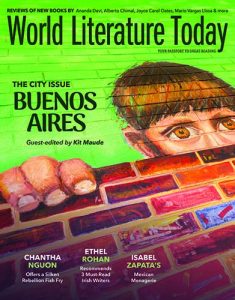Silk Road – Spring 2007
Volume 2 Number 1
Spring 2007
Annual
Rachel King
The subtitle for Silk Road is “A journal of writings on place.” In an interview with John Rember, he coins a contemporary definition for place: “Place used to be something that stayed the same, by which you could measure changes in yourself. Now you have to stay the same and watch while place changes. It means that place, if it’s going to exist at all, has to become internal rather than external.” Silk Road’s authors write about different places in the traditional sense – as physical entities – but they also inevitably write about the internal sense of place as well. An excellent example of this duality is in John Rember’s own story, “When a Cold Place Turns Hot”: “Can you ever really know a place if you keep changing?” his narrator asks.
The subtitle for Silk Road is “A journal of writings on place.” In an interview with John Rember, he coins a contemporary definition for place: “Place used to be something that stayed the same, by which you could measure changes in yourself. Now you have to stay the same and watch while place changes. It means that place, if it’s going to exist at all, has to become internal rather than external.” Silk Road’s authors write about different places in the traditional sense – as physical entities – but they also inevitably write about the internal sense of place as well. An excellent example of this duality is in John Rember’s own story, “When a Cold Place Turns Hot”: “Can you ever really know a place if you keep changing?” his narrator asks.
The poems tackle international as well as domestic places. Kenneth Parsons’s “A Beijing Playground in Early Winter” compares the elderly Chinese leisurely lifestyle to the hurried younger generation: “These modern ones, what are they reaching for?” The narrator in Heather Hallberg Yanda’s “In the Jewish Cemetery in Prague” also compares the past to the present: “I have become a trespasser here. / In my mind I apologize to the stones, to the spirits / surrounding me.”
“An Old Song,” “Sea and Death,” and “The Depths of Hell” are all in their English translations as well as their original language (Lithuanian, Spanish, and Polish, respectively), further enhancing a sense of a different place.
The final nonfiction piece, Bette Lynch Husted’s “Looking for Soapstone,” is set amid the origins of the journal: the beautiful Oregon woods. Through a funny narrative, Husted tells of how she learned about a place by being lost in it. Nature’s forest, like any place, can bring danger as well as solace.
Although Silk Road is only in its second year, this issue’s content demonstrates that Pacific University’s low-residency program is on its way to producing a great literary journal.
[silkroad.pacificu.edu/]



